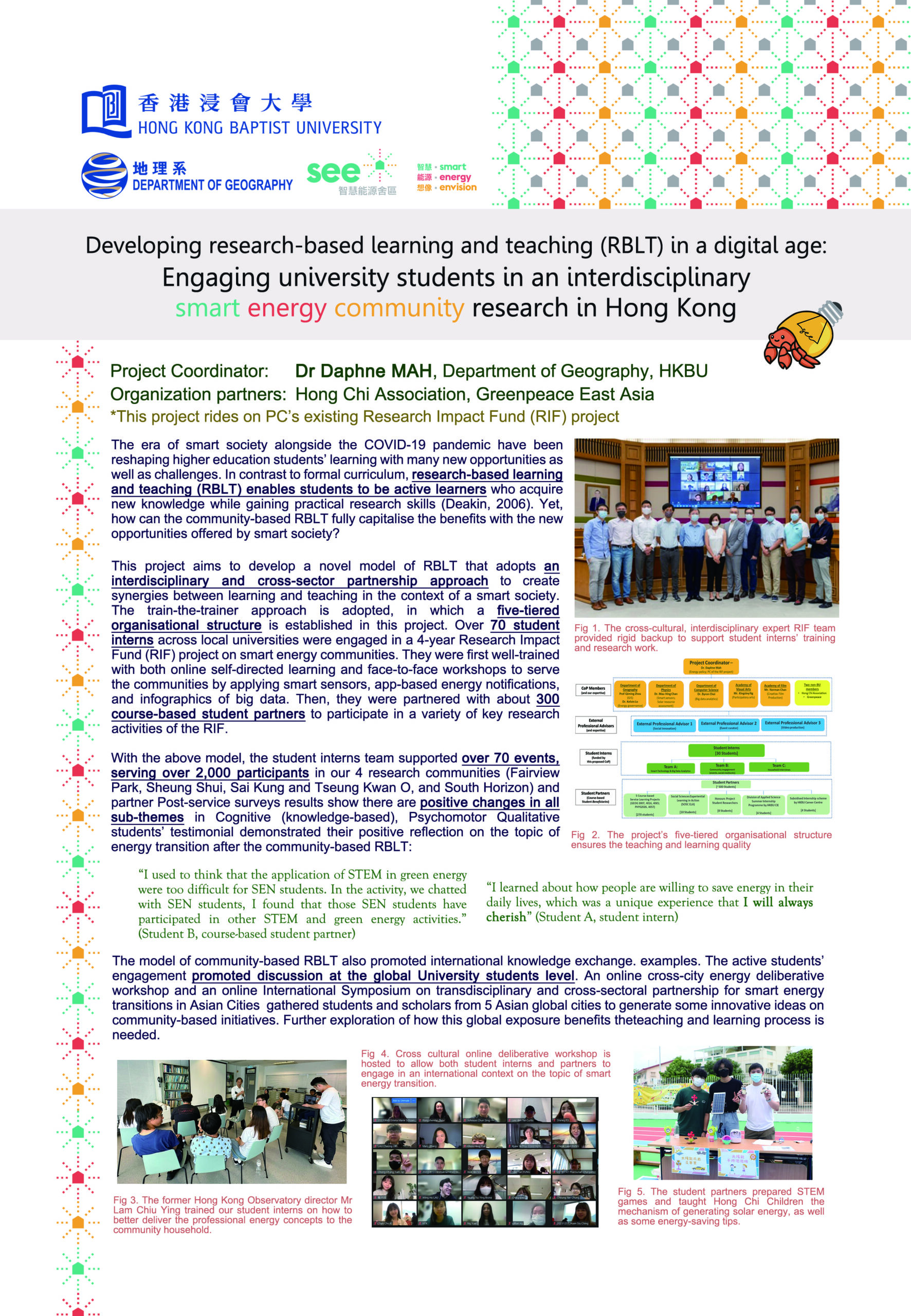- Reset all ×
- Poster Presentation ×
- City University of Hong Kong ×
- The Education University of Hong Kong ×
- Hong Kong Baptist University ×
- The University of Hong Kong ×
- The Hong Kong University of Science and Technology ×
- Tung Wah College ×
- 1.4 Other UGC grants, Quality Education Fund (QEF), and Quality Enhancement Support Scheme (QESS) ×
- 2.1 Community of Practice (CoP) ×
Filter Presentations
1 blog found
- N/A
Poster Presentation Time: 1500-1600; 1700-1800
Venue: B1, Tai Po-Shek-O Room, Lower Level I
Presenter(s)
– Miss Eunice Yuen Man CHAU, Senior Research Assistant, Department of Geography, Asian Energy Studies Centre, Hong Kong Baptist University
– Mr Andy Wei Hei SIU, Senior Research Assistant, MPhil student, Department of Geography, Asian Energy Studies Centre, Hong Kong Baptist University
Abstract
In this digital era, the learning model of higher education students has been reshaping due to emerging social structures and technological forces in a smart society, alongside the COVID-19 pandemic. Previous research has shown that there are several barriers to the implementation of research-based learning and teaching (RBLT) from the perspective of both students and teachers that are insufficient to cope with the changes in the present, and community-based learning that utilises the community as living laboratories seems to be a feasible solution. This research aims to develop a novel model of RBLT, adopting a train-the-trainer approach for over 70 student interns across local universities, and establishing a five-tiered organisational structure to comprehensively evaluate their positive changes in all sub-themes in Cognitive (knowledge-based), Psychomotor (action-based), and Affective (emotion-based) domains. Research data were collected from more than 70 events supported by trained student interns serving over 2,000 participants in our four research communities and partner schools. The research indicated that the impact of the model of community-based RBLT went beyond enhanced teaching and learning effectiveness for students and teachers. The combination of online and physical learning experiences also created synergies between learning and teaching.
